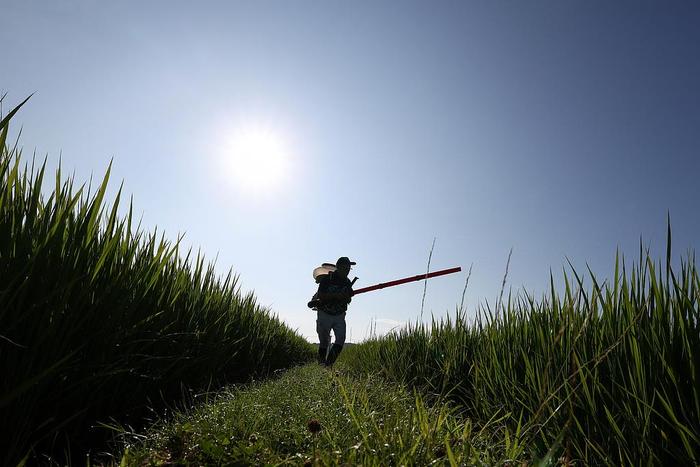

Japanese media reported on the 27th that due to recent high temperatures and a significant reduction in precipitation compared to previous years, many areas in Japan are facing severe water shortages. As a result, some regions have run out of water in their reservoirs, leading to slow-growing rice crops and a crisis for the harvest of new rice.
Japan has recently experienced “disaster-level” heatwaves, with local temperatures nearing 40 degrees Celsius. Data released by the Japan Meteorological Agency on the 27th showed that among more than 900 observation points across the country, 193 recorded temperatures above 35 degrees Celsius during the “heatwave weather.” The Japan Meteorological Agency and the Ministry of the Environment issued “heatstroke alerts” to 20 prefectures across the country.
Due to the continuous lack of rainfall and high temperatures, areas such as Fukui Prefecture, Niigata Prefecture, and Nagano Prefecture are severely short of water, affecting the growth of rice crops. A rice farmer in Fukui Prefecture mentioned that due to the scarcity of rainfall, the paddy fields have dried up and cracked, with the rice leaves turning yellow. Compared to previous years, the grain size of his rice is smaller, and its quality grade will decrease, predicting a reduced yield.
In Nagaoka City, Nagano Prefecture, the situation is equally dire. A rice farmer there stated that most of the rice planted is wilted due to the lack of water, forcing him to abandon cultivation and switch to using it as livestock feed.
Nagaoka City has not seen any rainfall in recent days, and the main reservoir’s water level had dropped to 16.3% by the 25th. The local government has called for residents in affected areas to save more than 40% of their water usage and has implemented other measures to cope with the water shortage. Additionally, reservoirs in Miyagi Prefecture and Hyogo Prefecture are also at critically low levels, with some facing no water at all.
On June 9th, Japanese citizens queued to purchase government-allocated reserve rice.
Last summer, extreme heatwaves caused by drought led to a significant reduction in rice production, causing a sharp increase in rice prices in Japan. In August last year, the meteorological department issued a warning about the possibility of a major earthquake occurring in the Pacific South China Sea trough in eastern Japan, triggering a panic buying frenzy among the public, resulting in a “rice shortage” in Japan.
According to Japanese media, the impact of the hot weather on this year’s new rice prices is concerning. Currently, the direction of new rice prices in Japan remains unclear.